Although the electric motor has only a few moving parts, it is not a simple machine. Because the rotor spins at high speeds, the internal windings and other components must be strong. The temperature also has to be managed. If the motor gets too hot, the magnets will lose their strength. Here’s a look inside the motor and it’s controller, the inverter.
AC, or alternating current
Generated by power stations, the battery flow of electricity switches constantly, 60 times per second — in a smooth, continuous wave
Air gap
Distance between the rotor and the stator
Armature
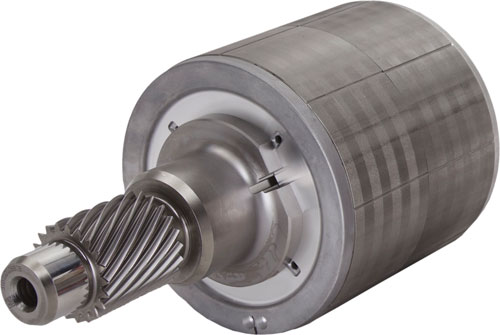 The component in the electric motor in which the current passes to generate torque
The component in the electric motor in which the current passes to generate torqueBrushed motor
A type of motor that uses carbon brushes pressed against the rotor to pass electricity. This type of motor does not drive a vehicle, but is used elsewhere on vehicles, such as in power mirrors, seats and sunroofs.
Brushless motor
A motor that has a rotor made of magnets, not coil windings
Commutator
Used in DC brushed motors and located at one end of the rotor, it reverses the polarity of the magnets, which, because of the repulsion and attraction created by the magnetic fields, keep the rotor spinning
DC, or direct current
Battery flow of electricity in one direction, between positive and negative terminals
Electric motor
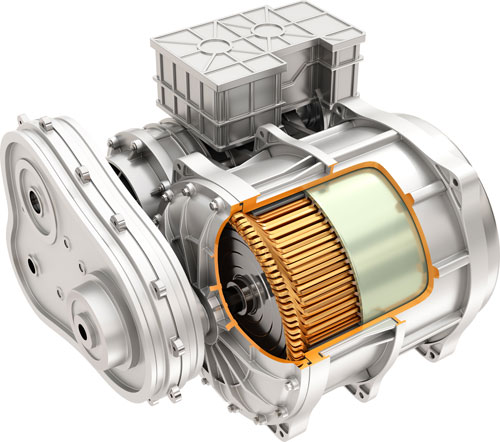 Converts electricity into mechanical energy
Converts electricity into mechanical energyInduction
A type of motor that uses an alternating current passing through coils in the stator to create a magnetic field. The rotor, made of copper or aluminum bars with iron in between each, spins due to the magnetic field induced by the current.
Inverter
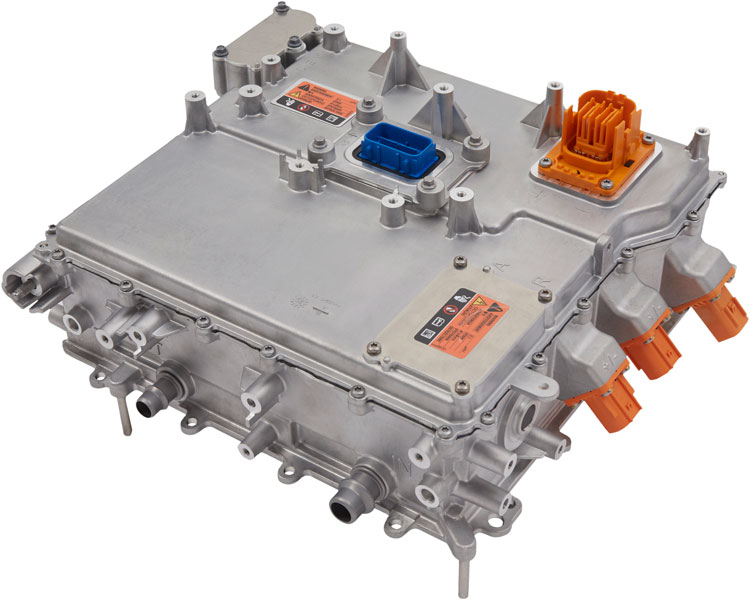 Device that converts AC, or alternating current, to DC, or direct current
Device that converts AC, or alternating current, to DC, or direct currentMotor efficiency
The measurement of the conversion of electricity into mechanical energy. Loss happens mostly by electricity turning to heat during the conversion process, and friction in the rotor.
Permanent magnet brushless
The rotor is the permanent magnet, and it rotates when the direction of the current in the coils in the stator changes. This motor does not use a commutator.
Permanent magnet synchronous motor
A close relative of the brushless motor, it uses AC current and has magnets in both the rotor and stator. The rotor turns at the speed of the frequency of the current.
Resolver
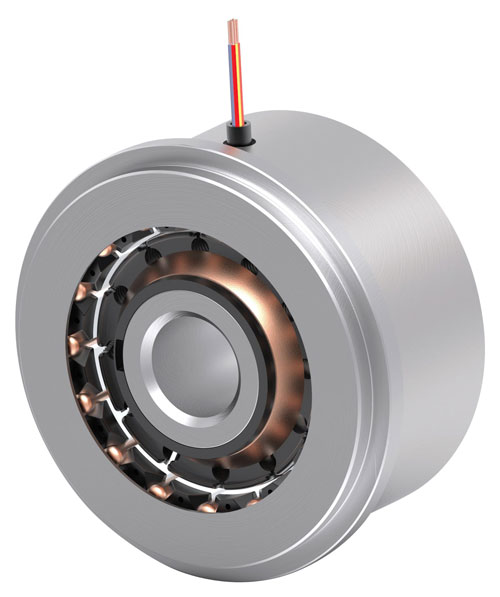 Located on one end of the motor, it measures the position, speed and direction of rotation of the rotor
Located on one end of the motor, it measures the position, speed and direction of rotation of the rotorRotor
The shaft that rotates inside the stator and transmits power to the gearbox. Depending on the type of motor, the rotor can be made of steel plates and coils of tightly wound copper wire or it can be constructed of magnets. The rotor is supported at each end by bearings, and there is an air gap between the rotor and the stator. The rotor spins because of the motion created by magnetic attraction and repulsion between it and the stator.
Stator
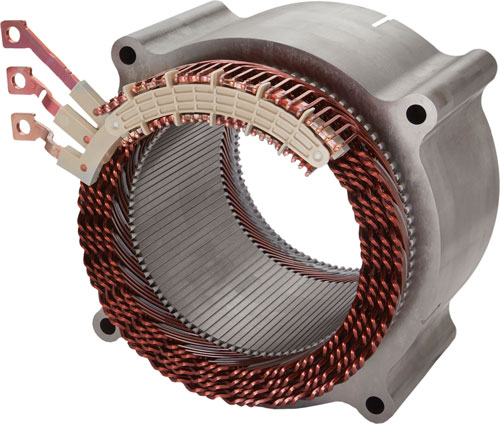 Consists of a stack of thin metal plates, called laminations, that are insulated from each other and have a series of grooves through which copper wires are routed. The insulated metal plates contain slots that hold a series of magnets. The stator creates a magnetic field either from the permanent magnets or by current traveling through its coil windings. It is usually housed in the frame of the motor. The stator generates the force that spins the rotor.
Consists of a stack of thin metal plates, called laminations, that are insulated from each other and have a series of grooves through which copper wires are routed. The insulated metal plates contain slots that hold a series of magnets. The stator creates a magnetic field either from the permanent magnets or by current traveling through its coil windings. It is usually housed in the frame of the motor. The stator generates the force that spins the rotor.Three-phase
When an AC motor has three sources of power creating sine waves that are in different places at different times
Source: Automotive News research